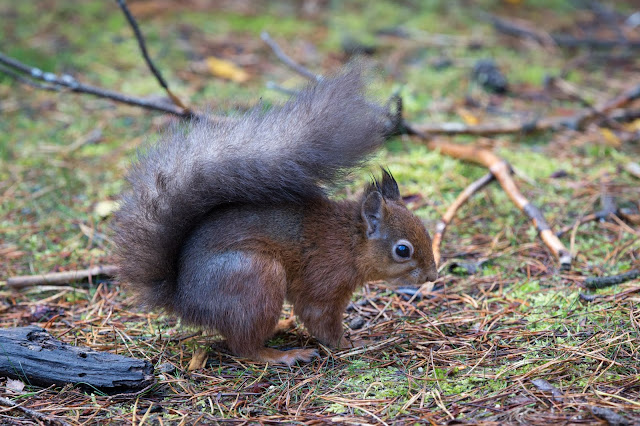In each of the previous four winters one sparrowhawk has been present in the garden for months on end (or two birds, an adult and a juvenile, sharing the garden last winter). This season seems different. I have changed from saying the sparrowhawk to a sparrowhawk because I think I am seeing a different bird each time. If so, there have now been four different adult males in the last two months. This is the new arrival.
The latest bird flew past my study window and straight to the perch in the kitchen garden. He was here for about five minutes, long enough for a bit of scratching and grooming (from him) and long enough for me to take a few photos with each camera. My immediate thought was that this bird looked a bit greyer than the last one and now having examined the photos I am fairly sure it is a new bird. He sat with his back to the window so the views were limited. This was a couple of weeks ago and have I waited in case he would return for more photos but so far he hasn't done so, at least when I was looking. Here he is in portrait.
The first recent arrival was in late August - a rather dishevelled yearling that had been here as a juvenile the year before.
Next, in mid September was a paler bluish bird that I saw only once.
In late September another bird made a single appearance. I was sure it wasn't one I had seen before and I was able to compare the appearances of all eight birds that have sat on the perch in the past four years.
Originally I was relying mainly on marks or scars on the cere but I have realised there are other distinguishing features as well. In this image they are: A, the profile of the cere (looking at the dark marks requires a front-on view which I haven't always achieved); B, the markings and colouring in front of the eye; C, the appearance of the medial canthus, or medial palpebral commissure, in front of the eye; D, the shape of the nostril; E, the shape of the lower mandible; and F, the more general colouring below and behind the eye.
Here are the five birds I have seen this year in date order - last winter's adult male together with the four recent birds from late August, mid September, late September and mid October. If you click on the photos you should be able to see them a bit larger.
Having a camera ready at the window with a 600mm lens (≍960mm with a crop sensor) has allowed me to get detailed views of these birds, all sat on the same perch less than 3m from the window (I recently moved it a bit closer). Next time a sparrowhawk turns up for a photo I shall be able to look closely to see who it is. If it is the latest bird back again I'll try to get more photos to compare with last winter. Any comments will be welcome.


















































